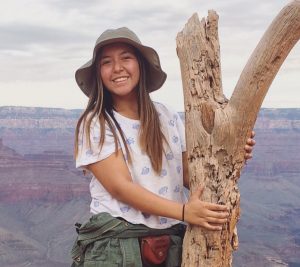Sediment transport and deposition of marine sands through the Silver Strand littoral cell

Dalia Rodriguez
BA Candidate
Advisor: Dr. Jillian Maloney
Friday May 10th, 2019
CSL 422 1:50 pm
watch Dalia’s defense
Abstract
Seasonal storms and sea-level rise cause erosion of the present shoreline and effect Southern California’s coastal infrastructure. Local and regional projects replenish several beaches along the San Diego coast from Oceanside to Imperial Beach, with the most recent regional replenishment in 2012. The importance of understanding sediment transport and deposition along the San Diego continental margin is key not only to plan for future beach replenishments but also to understand the sediment source and how sediment characteristics change along their transport pathway, which is important for contaminant transport studies. In order to assess changes to sediment along the transport path from river mouth, through longshore beach transport, and then transport into the offshore, samples were collected from three different locations within the Silver Strand littoral cell: 1) The beach adjacent to the Tijuana River mouth, 2) Coronado Beach to the north, and 3) ~3.6 km offshore from the Silver Strand. A Laser Diffraction Particle Size Analyzer (LS 13 320) was used for grain size analysis of sediment from each location, to further understand the longshore and offshore transport. The Tijuana River mouth includes coarse to very coarse, subangular sands and Coronado beach is made up of fine to medium sub-rounded sand. As we go further offshore, a sediment core captured the upper 65 cm of sediment below the seafloor, which are made up of silty and very fine sands that don’t vary much with depth. The
Silver Strand littoral cell has a northward transport path, and extends from Ensenada, Mexico to Coronado Island. From Coronado Island, the current changes to flow westward, away from the beach into deeper water. The primary source of sediment for the littoral cell is from the Tijuana River. From our results, the sediment deposited in the littoral cell becomes finer and better sorted moving away from the Tijuana River mouth. The two beach samples have very few fine grained sediments compared to the offshore sample, which is likely due to the higher energy on beaches compared to the offshore environment.

